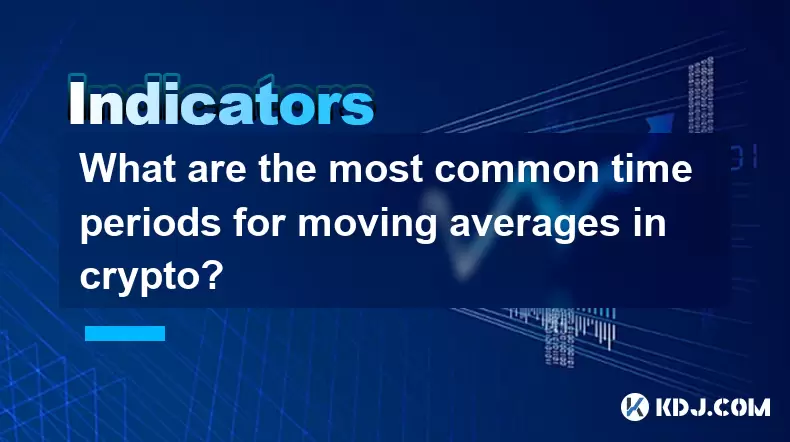-
 Bitcoin
Bitcoin $115100
-1.30% -
 Ethereum
Ethereum $4758
-1.70% -
 XRP
XRP $3.027
-2.19% -
 Tether USDt
Tether USDt $0.9998
-0.01% -
 BNB
BNB $883.2
-1.42% -
 Solana
Solana $204.0
2.62% -
 USDC
USDC $1.000
0.02% -
 Dogecoin
Dogecoin $0.2371
-0.97% -
 TRON
TRON $0.3612
-1.24% -
 Cardano
Cardano $0.9128
-2.19% -
 Chainlink
Chainlink $26.13
-3.93% -
 Hyperliquid
Hyperliquid $44.73
0.90% -
 Sui
Sui $3.715
-0.56% -
 Stellar
Stellar $0.4153
-2.41% -
 Ethena USDe
Ethena USDe $1.000
-0.04% -
 Bitcoin Cash
Bitcoin Cash $588.9
-2.06% -
 Avalanche
Avalanche $25.91
3.27% -
 Hedera
Hedera $0.2525
-1.45% -
 Litecoin
Litecoin $120.9
-1.35% -
 UNUS SED LEO
UNUS SED LEO $9.607
0.30% -
 Toncoin
Toncoin $3.382
-0.31% -
 Shiba Inu
Shiba Inu $0.00001329
-0.38% -
 Uniswap
Uniswap $11.38
-1.67% -
 Polkadot
Polkadot $4.222
2.83% -
 Aave
Aave $354.5
4.93% -
 Dai
Dai $0.0000
0.00% -
 Bitget Token
Bitget Token $4.704
-1.49% -
 Cronos
Cronos $0.1565
1.83% -
 Ethena
Ethena $0.7463
1.55% -
 Monero
Monero $265.8
-0.39%
What are the most common time periods for moving averages in crypto?
Moving averages help crypto traders identify trends, with the 200-day MA being key for long-term bias, while EMAs offer faster signals than SMAs due to greater weight on recent prices.
Aug 13, 2025 at 11:36 am

Understanding Moving Averages in Cryptocurrency Trading
Moving averages are among the most widely used technical indicators in the cryptocurrency market. Traders use them to smooth out price data over a specific period, helping identify trends and potential reversal points. A moving average (MA) calculates the average price of an asset over a defined number of time intervals, updating as new data becomes available. Because crypto markets operate 24/7 and are highly volatile, moving averages provide a structured way to interpret price action. The core purpose of using a moving average is to filter out noise and highlight the underlying direction of price movement. Different time frames serve various trading strategies, from short-term scalping to long-term investing.
Popular Short-Term Moving Averages
Short-term moving averages are ideal for traders who focus on quick entries and exits, often holding positions for hours or days. The 9-period and 10-period moving averages are commonly used for their sensitivity to recent price changes. These are frequently applied on 15-minute, 1-hour, or 4-hour charts. The 20-period moving average is also popular, especially when analyzing daily charts for short-term trends. When price remains above the 20 MA, it suggests bullish momentum; when below, bearish sentiment may dominate. Traders often combine the 9 and 20 MAs to create a crossover strategy. For example:
- When the 9 MA crosses above the 20 MA, it may signal a buy opportunity.
- When the 9 MA crosses below the 20 MA, it could indicate a sell signal.
These short-term MAs react quickly, making them suitable for day traders and those using leverage on platforms like Binance or Bybit.
Mid-Term Moving Averages for Trend Confirmation
Mid-term moving averages help traders assess the strength and sustainability of a trend over weeks. The 50-period moving average is one of the most watched indicators in crypto trading. It is commonly applied to daily or 4-hour charts and acts as a dynamic support or resistance level. When Bitcoin or Ethereum trades above the 50 MA, the broader trend is considered bullish. Conversely, trading below it may suggest weakening momentum. This MA is particularly useful for swing traders. Another widely used mid-term average is the 48-period MA, which some traders prefer on 4-hour charts as it covers exactly two days of continuous market activity. Key behaviors include:
- Price bouncing off the 50 MA may confirm trend continuation.
- A breakdown below the 50 MA with high volume could signal a trend reversal.
- Institutional traders often monitor the 50 MA for positioning cues.
Many traders use the 50 MA in conjunction with volume indicators to validate breakout attempts.
Long-Term Moving Averages for Strategic Positioning
For investors with a longer horizon, typically holding assets for months or years, long-term moving averages offer critical insights. The 100-period moving average is frequently used on daily charts to gauge intermediate to long-term trends. It is less reactive than shorter MAs, providing a clearer view of sustained market direction. The 200-period moving average is arguably the most significant long-term indicator in crypto. Often referred to as the "death cross" or "golden cross" trigger when interacting with the 50 MA, it holds psychological importance. Key observations include:
- When the 50 MA crosses above the 200 MA, it forms a golden cross, seen as a strong bullish signal.
- When the 50 MA crosses below the 200 MA, it creates a death cross, interpreted as a major bearish indicator.
Bitcoin has historically respected the 200-day MA, with price often finding support near it during corrections. Long-term holders use this level to decide on accumulation or distribution phases.
Exponential vs Simple Moving Averages
While the time periods are crucial, the type of moving average also affects interpretation. The Simple Moving Average (SMA) calculates the arithmetic mean of prices over a set period. In contrast, the Exponential Moving Average (EMA) gives more weight to recent prices, making it more responsive to new information. In fast-moving crypto markets, many traders prefer the EMA because it reduces lag. For instance:
- The 12 EMA and 26 EMA are components of the MACD indicator and are widely used on 1-hour and 4-hour charts.
- On daily charts, the 50 EMA reacts faster to price changes than the 50 SMA, offering earlier signals.
- Scalpers often use the 9 EMA due to its sensitivity.
Traders must decide whether they prioritize responsiveness (EMA) or stability (SMA) based on their strategy.
Custom Combinations and Multi-Timeframe Analysis
Advanced traders often layer multiple moving averages across different timeframes to confirm signals. A common setup includes:
- 9 EMA, 20 EMA, and 50 EMA on a 1-hour chart for intraday trading.
- 50 SMA and 200 SMA on a daily chart for trend bias.
- Using the 200 MA on a weekly chart to define the macro trend.
Multi-timeframe analysis involves checking alignment across charts. For example, if the 4-hour chart shows price above the 50 MA and the daily chart confirms the same, the bullish case strengthens. Misalignment, such as a short-term bounce above the 20 MA while the weekly 200 MA slopes downward, may suggest a countertrend rally rather than a reversal.
Frequently Asked Questions
What is the best moving average period for Bitcoin trading?
The 200-day moving average is widely regarded as the most important for Bitcoin. It has historically acted as a long-term support level during bear markets and a breakout target in bull phases. Many institutional investors use it as a benchmark for entry and exit decisions.
How do I set up moving averages on TradingView?
To add a moving average on TradingView:
- Open a chart for any cryptocurrency.
- Click on the "Indicators" button at the top.
- Search for "Moving Average" or "EMA."
- Select the type (SMA or EMA), set the period (e.g., 50), and choose the color.
- Click "Add to Chart." Repeat for additional MAs.
Can moving averages be used in sideways markets?
In ranging markets, moving averages may produce false signals due to price oscillating around the average. Traders often combine MAs with Bollinger Bands or RSI to avoid whipsaws. Crossovers lose reliability when volatility is low and trends are absent.
Why do some traders use 48 instead of 50-period moving averages?
The 48-period MA on a 4-hour chart covers exactly two days (48 x 4 hours = 192 hours ≈ 8 days), aligning with weekly cycles. Some traders believe this provides a cleaner read on short-term momentum without the rounding bias of the 50 MA.
Disclaimer:info@kdj.com
The information provided is not trading advice. kdj.com does not assume any responsibility for any investments made based on the information provided in this article. Cryptocurrencies are highly volatile and it is highly recommended that you invest with caution after thorough research!
If you believe that the content used on this website infringes your copyright, please contact us immediately (info@kdj.com) and we will delete it promptly.
- Crypto, Pepe, and Investment: Navigating the Meme Coin Mania in 2025
- 2025-08-24 06:45:29
- Crypto Market Recovery: Unearthing ROI Gems in 2025
- 2025-08-24 05:25:35
- Aave, World Liberty, and Token Allocation: Decoding the DeFi Buzz
- 2025-08-24 05:25:35
- Crypto Presales & Exchange Launches: What's Hot Now?
- 2025-08-24 05:45:17
- Meme Coin Mania: Experts Rank Layer Brett as the Top Contender
- 2025-08-24 05:45:18
- Sui Price Prediction: Will the Breakout Move Stick?
- 2025-08-24 06:05:29
Related knowledge

What does it mean when the +DI and -DI cross frequently in the DMI indicator but the ADX is flattening?
Aug 11,2025 at 03:15am
Understanding the DMI Indicator ComponentsThe Directional Movement Index (DMI) is a technical analysis tool composed of three lines: the +DI (Positive...

What does the sudden appearance of a "dark cloud cover" candlestick pattern during an uptrend indicate?
Aug 13,2025 at 11:35am
Understanding the 'Dark Cloud Cover' Candlestick PatternThe dark cloud cover is a bearish reversal pattern in technical analysis that typically appear...

What does it mean when the moving average, MACD, and RSI all send buy signals simultaneously?
Aug 11,2025 at 01:42pm
Understanding the Convergence of Technical IndicatorsWhen the moving average, MACD, and RSI all generate buy signals at the same time, traders interpr...

What does it mean when both the KDJ indicator and the RSI show overbought signals simultaneously?
Aug 13,2025 at 11:35am
Understanding the KDJ Indicator in Cryptocurrency TradingThe KDJ indicator is a momentum oscillator derived from the Stochastic Oscillator, widely use...

What does it mean when the price is trading above the SAR indicator but the red dots are densely packed?
Aug 09,2025 at 11:49pm
Understanding the SAR Indicator and Its Visual SignalsThe SAR (Parabolic Stop and Reverse) indicator is a technical analysis tool used primarily to de...

What does it mean when the candlestick chart forms a "Morning Star" but trading volume is sluggish?
Aug 12,2025 at 06:28pm
Understanding the Morning Star Candlestick PatternThe Morning Star is a three-candle bullish reversal pattern commonly observed in cryptocurrency pric...

What does it mean when the +DI and -DI cross frequently in the DMI indicator but the ADX is flattening?
Aug 11,2025 at 03:15am
Understanding the DMI Indicator ComponentsThe Directional Movement Index (DMI) is a technical analysis tool composed of three lines: the +DI (Positive...

What does the sudden appearance of a "dark cloud cover" candlestick pattern during an uptrend indicate?
Aug 13,2025 at 11:35am
Understanding the 'Dark Cloud Cover' Candlestick PatternThe dark cloud cover is a bearish reversal pattern in technical analysis that typically appear...

What does it mean when the moving average, MACD, and RSI all send buy signals simultaneously?
Aug 11,2025 at 01:42pm
Understanding the Convergence of Technical IndicatorsWhen the moving average, MACD, and RSI all generate buy signals at the same time, traders interpr...

What does it mean when both the KDJ indicator and the RSI show overbought signals simultaneously?
Aug 13,2025 at 11:35am
Understanding the KDJ Indicator in Cryptocurrency TradingThe KDJ indicator is a momentum oscillator derived from the Stochastic Oscillator, widely use...

What does it mean when the price is trading above the SAR indicator but the red dots are densely packed?
Aug 09,2025 at 11:49pm
Understanding the SAR Indicator and Its Visual SignalsThe SAR (Parabolic Stop and Reverse) indicator is a technical analysis tool used primarily to de...

What does it mean when the candlestick chart forms a "Morning Star" but trading volume is sluggish?
Aug 12,2025 at 06:28pm
Understanding the Morning Star Candlestick PatternThe Morning Star is a three-candle bullish reversal pattern commonly observed in cryptocurrency pric...
See all articles

























































































